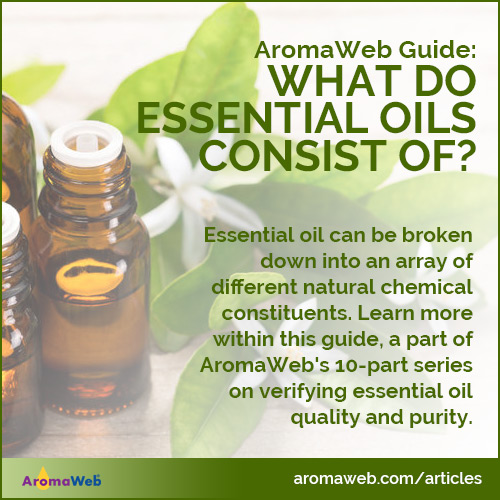Constituents - What Do Essential Oils Consist Of?
All substances can be broken down into an array of molecules and atoms, and essential oils are no different. Each essential oil can be broken down into an array of different natural chemical constituents.
Essential oils are comprised of constituents that are classified into the following functional groups (this is not a complete list):
- Alcohols (Monoterpenols and Sesquiterpenols)
- Aldehydes
- Coumarins
- Ethers
- Esters
- Ketones
- Lactones
- Terpenes (Monoterpenes and Sesquiterpenes)
- Oxides
- Phenols
Lavender Oil, for example, contains a high percentage of the ester known as linalyl acetate and a monoterpenol known as linalol.
aMany of our modern medicines are a result of analyzing the natural chemical constituents of raw botanicals and distilled essential oils. Common aspirin is one example. White Willow Bark, used over 2,000 years ago by Hippocrates to ease headaches and other muscular pains, contains a natural anti-inflammatory identified in the nineteenth century as salicin. Salicin is a cousin to salicylic/acetylsalicylic acid, more commonly known as aspirin. White Willow Bark is still routinely used by herbalists to more naturally relieve pain and inflammation.
After the analysis and discovery of the beneficial components in essential oils and raw botanicals, chemists began to isolate these constituents for use in modern medicines. Chemists then derive ways to more inexpensively synthesize these constituents.
Because of science's ability to isolate and synthesize particular constituents, we must be careful within the practice of aromatherapy to ensure that the essential oils that we use haven't been adulterated with isolated or synthetic compounds.
This topic consists of several separate related articles. Use the links shown below to navigate through the series.
Next: Part 5: Quality vs. Purity - Aren't They the Same Thing?
- Part 1: Introduction
- Part 2: Why Is the Quality/Purity of an Essential Oil Important?
- Part 3: Aren't Most Essential Oils Pure?
- Part 4: Constituents - What do Essential Oils Consist Of?
- Part 5: Quality vs. Purity - Aren't They the Same Thing?
- Part 6: Quantifiable Testing of Essential Oils
- Part 7: GC-MS and GC-FID Test Results: How to Understand and Use Them
- Part 8: Organoleptic Testing of Essential Oils
- Part 9: Other Quantifiable Tests for Testing the Quality and Purity of Essential Oils
- Part 10: Essential Oil Quality and Purity Conclusion: Final Questions/Answers
